Prostrate Knotweed
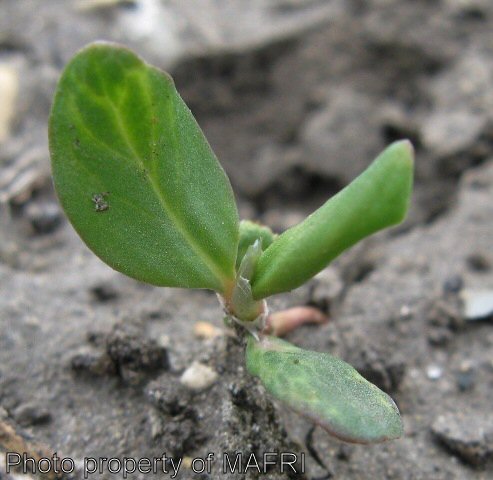 click to enlarge |
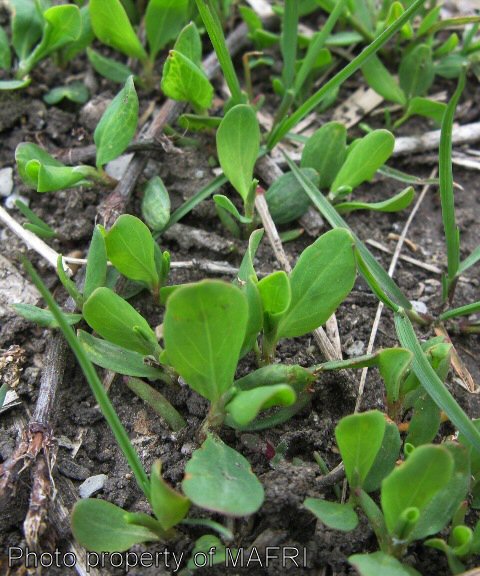 |
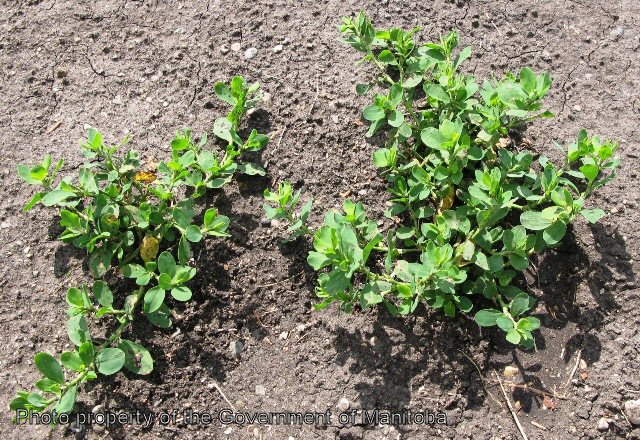 |
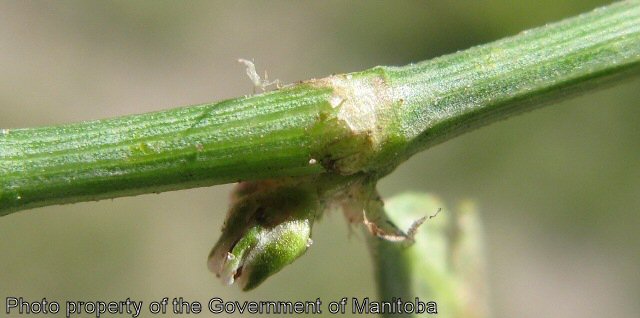 |
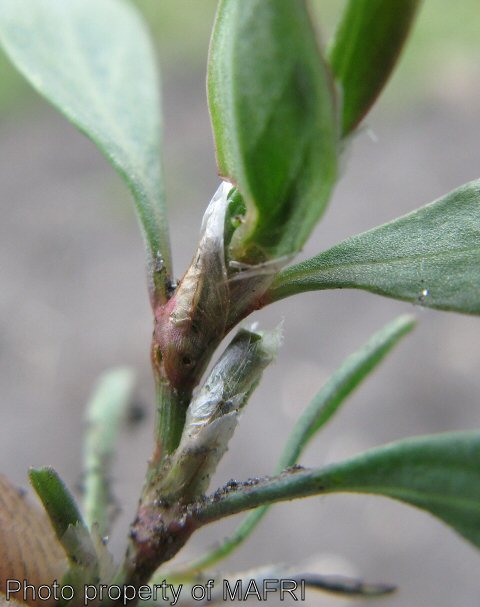 |
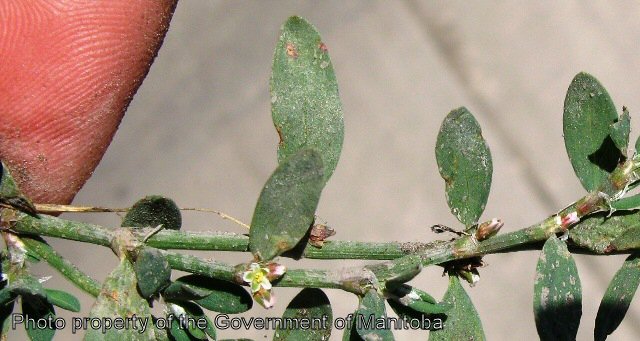 |
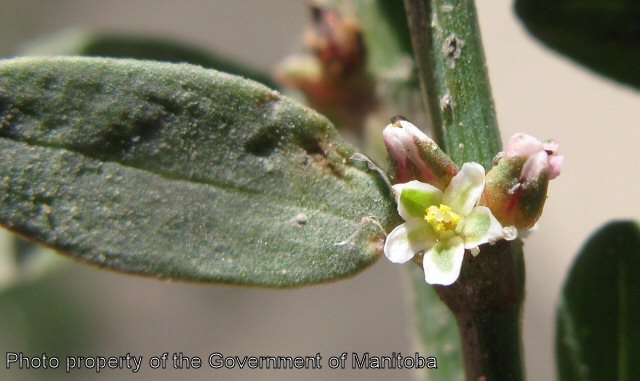 |
Biology
An annual weed, reproducing by seeds. Stems are prostrate to semi-erect, wiry, leafy, and have thin papery sheaths (ocrea) at each joint. The leaves are alternate, dull, blue to green in colour, hairless, and tapered toward the tip and base. They are widest near the middle, 1-6.5 cm long and 3-8.5 mm wide. The flowers are small, inconspicuous, lack petals, and occur in clusters at leaf axils. The seeds are slightly rough, about 1.5 mm long, 3-sided, and reddish-brown in colour.
Prostrate knotweed grows well on compacted soils, especially roadsides and walking paths.
Scouting Techniques
Take a minimum of 20 weed counts across the field.
Effects On Crop Quality
Prostate knotweed can indirectly affect the development of field crops because it is a host for dodder and powdery mildew.
Control Tips
- cultivation
- hoeing/hand pulling
- Groups 3 & 4
